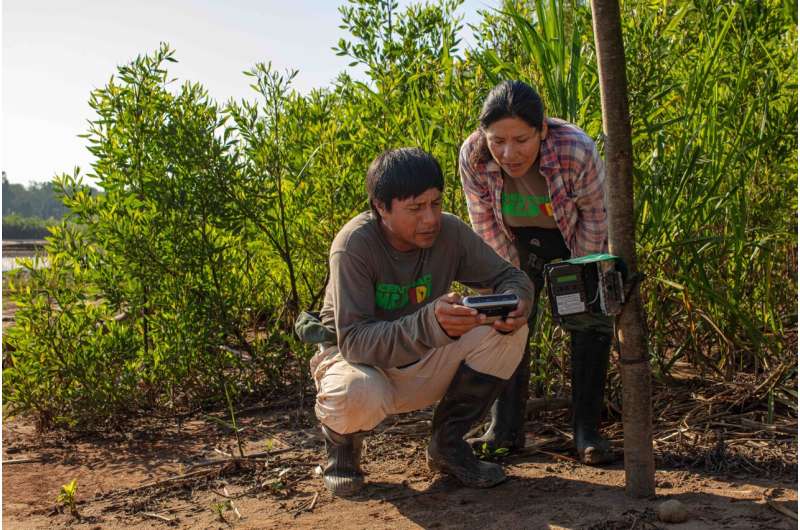Scientists provide more than 57,000 camera trap images for massive study on Amazon wildlife

Wildlife Conservation Society (WCS) scientists working in the vast Amazon Basin have contributed more than 57,000 camera trap images for a new study published in the journal Ecology by an international team of 120 research institutions.
The study consists of over 120,000 images taken in eight countries, representing the largest photo database to date of the Amazon's staggering array of wildlife. The images show 289 species taken during the period 2001-2020, from 143 field sites.
The WCS images from Bolivia, Brazil, Colombia, Ecuador and Peru reveal playful jaguar cubs, a giant anteater lounging in a mud wallow, elusive short-eared dogs, along with tapirs, white-lipped peccaries, harpy eagles, toucans, pumas, Andean bears and dozens of other species. Jaguars and Andean bears are priority species for WCS.
The purpose of the study is to build a database of Amazon wildlife images, while also documenting habitat loss, fragmentation and climate change. The Amazon Basin covers nearly 3.2 million square miles (8.5 million square kilometers) in Brazil, Bolivia, Colombia, Ecuador, French Guiana, Peru, Suriname and Venezuela.
Said Robert Wallace, Director of WCS's Greater Madidi-Tambopata Landscape Program, and a co-author of the study, "WCS scientists were proud to collaborate with such a diverse group of scientists and organizations on this important study. The tens of thousands of images WCS provided will serve as critical data points to show where wildlife occurs and the staggering diversity of species found in the Amazon region."
One hundred forty-seven scientists from 122 research institutions and nature conservation organizations collaborated on the Ecology study, which was led by German Centre for Integrative Biodiversity Research (iDiv) and the Friedrich Schiller University Jena.
This study marks the first time images from camera traps from different regions of the Amazon have been compiled and standardized on such a large scale.
More information: Ana Carolina Antunes et al, AMAZONIA CAMTRAP : A dataset of mammal, bird, and reptile species recorded with camera traps in the Amazon forest, Ecology (2022). DOI: 10.1002/ecy.3738
Journal information: Ecology
Provided by Wildlife Conservation Society



















